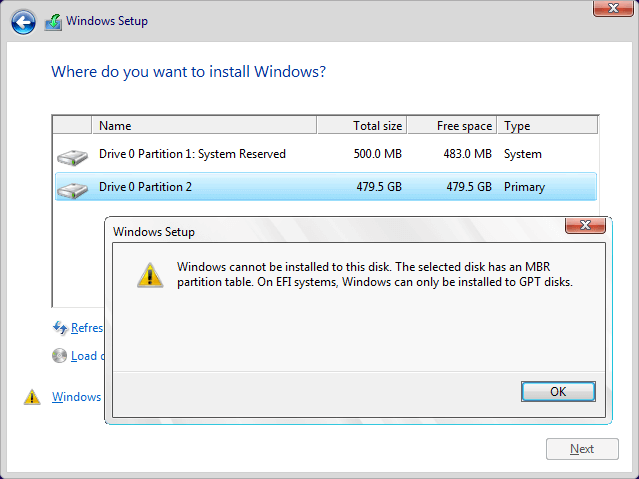
Enter Y for the drive letter. Select Change Drive Letter and Paths. Select the partition marked System Reserve.Press-and-hold or right-click on it. In the Run window that comes up, type diskmgmt.msc and press Enter. Press the Windows key + R.
Efi Partition Install Will Fail
Microsoft is still super picky about this and the install will fail otherwise.Boot into Windows. In BIOS, make sure you turn off the SATA controllers for all hard drives except for the one you intend to install Windows 10 on. I did not need to put a new config.plist or any kexts into the EFI partition of the USB Installing Windows 10. Press Shift + F10 on the.2 answers 0 votes: Since your computer was setup from the factory in EFI/SecureBoot mode, you ARE able to resize. Boot your computer with Windows installation media.

If linux cannot find efi partition, it will be ok to create partitions in the order efi, msr, ntfs, ext4. AFAIK, Linux wouldn't have any issue with efi partition position. Yes, Windows chooses the unallocated space and creates required partitions itself. Few search results showed me that MSR partition is not mandatory. Also, as you haven't created msr partition, it could be the reason. The efi fat32 partition you have created from linux live distro maynot be having efi partition id.
Efi Partition Manual Partitioning With
list disk - lists available disks. You may need to use this diskpart's command line method of partitioning since the gui way of partitioning during installation may not be able to create efi or msr partition types manually. In diskpart, use the commands. Enter the command diskpart to use command line manual partitioning with diskpart. A command prompt window opens. Boot up Windows installation disk and when the install windows button appears, press Shift + F10.
Make sure you have backup. clean - clears the partition table and erases all partitions. select disk 0 - selects your hard disk.
create partition msr size=128 - creates 128MB msr partition. When using format command, make sure the partition is selected by "list partition" command. format fs=fat32 quick label="efi" - Formats the efi partition with fat32 partition. If your disk is using advanced format, change the value to 260. create partition efi size=100 - creates a 100MB efi partition. Clean command should follow this.
create partition primary size=xxxx - create ext partitions for use with linux. format fs=ntfs quick label="somelabel" - formats the above created ntfs partitions. Repeat this to create additional ntfs partitions for storage if needed. The xxxx is partition size value in MB.


 0 kommentar(er)
0 kommentar(er)
